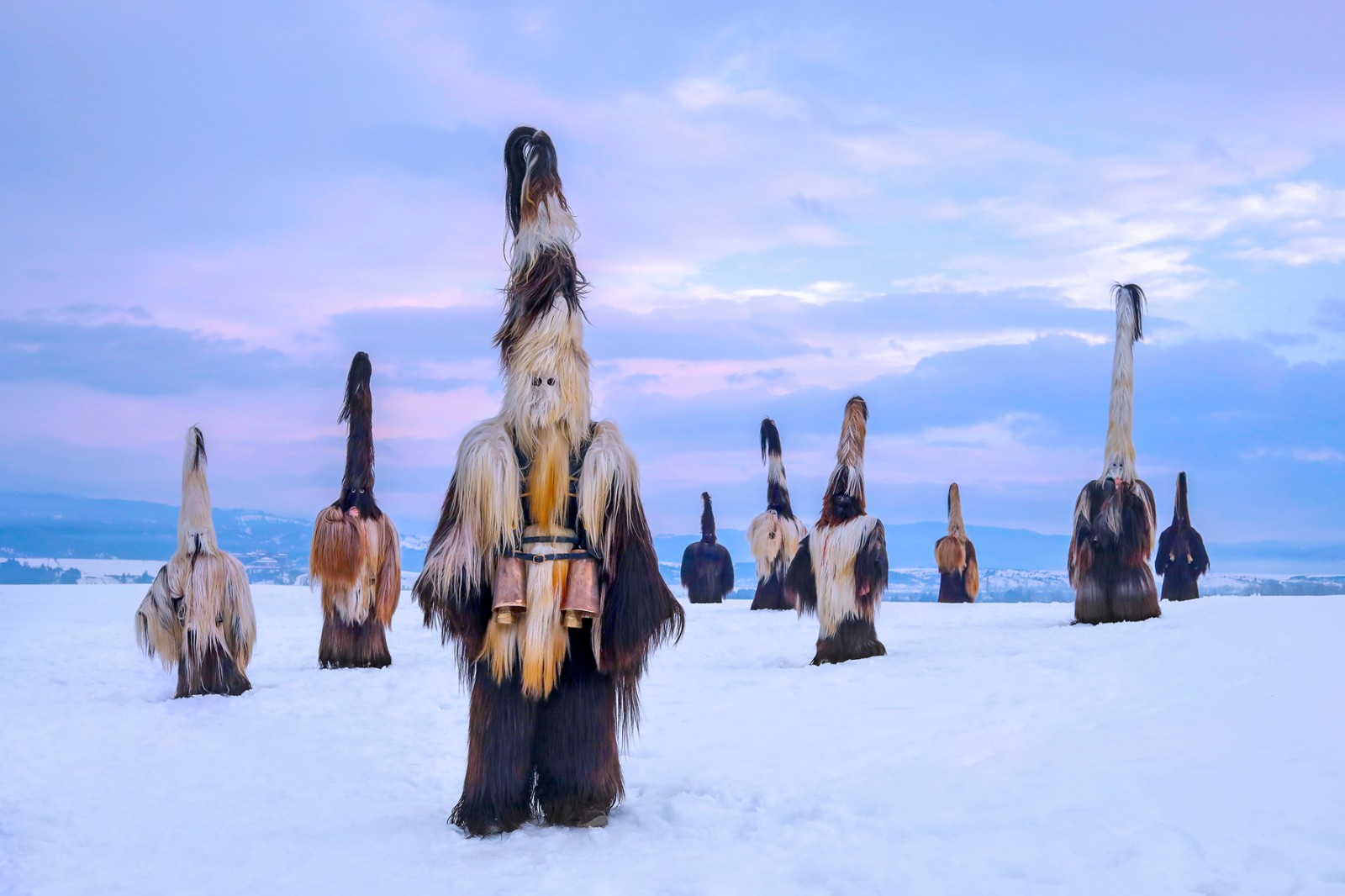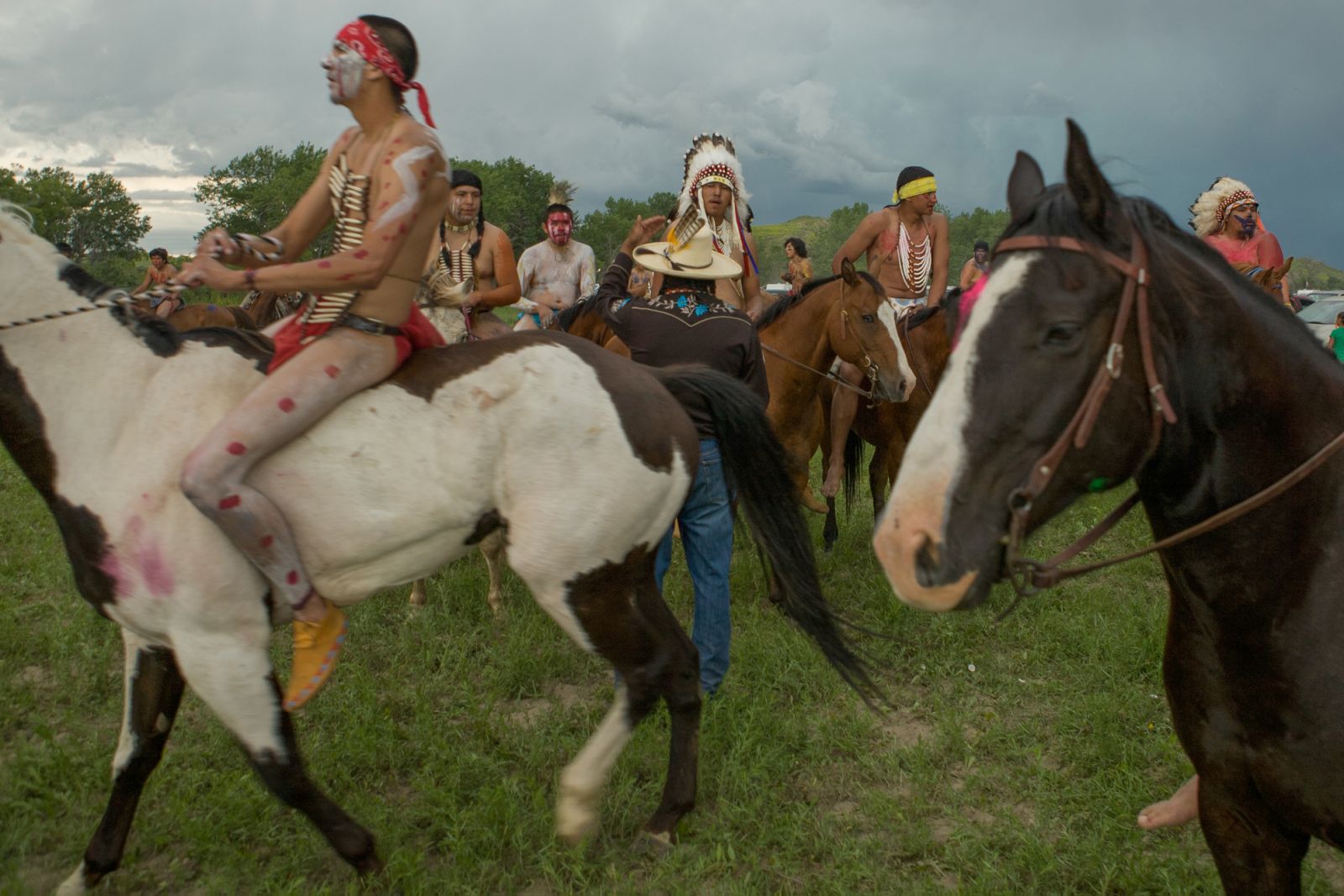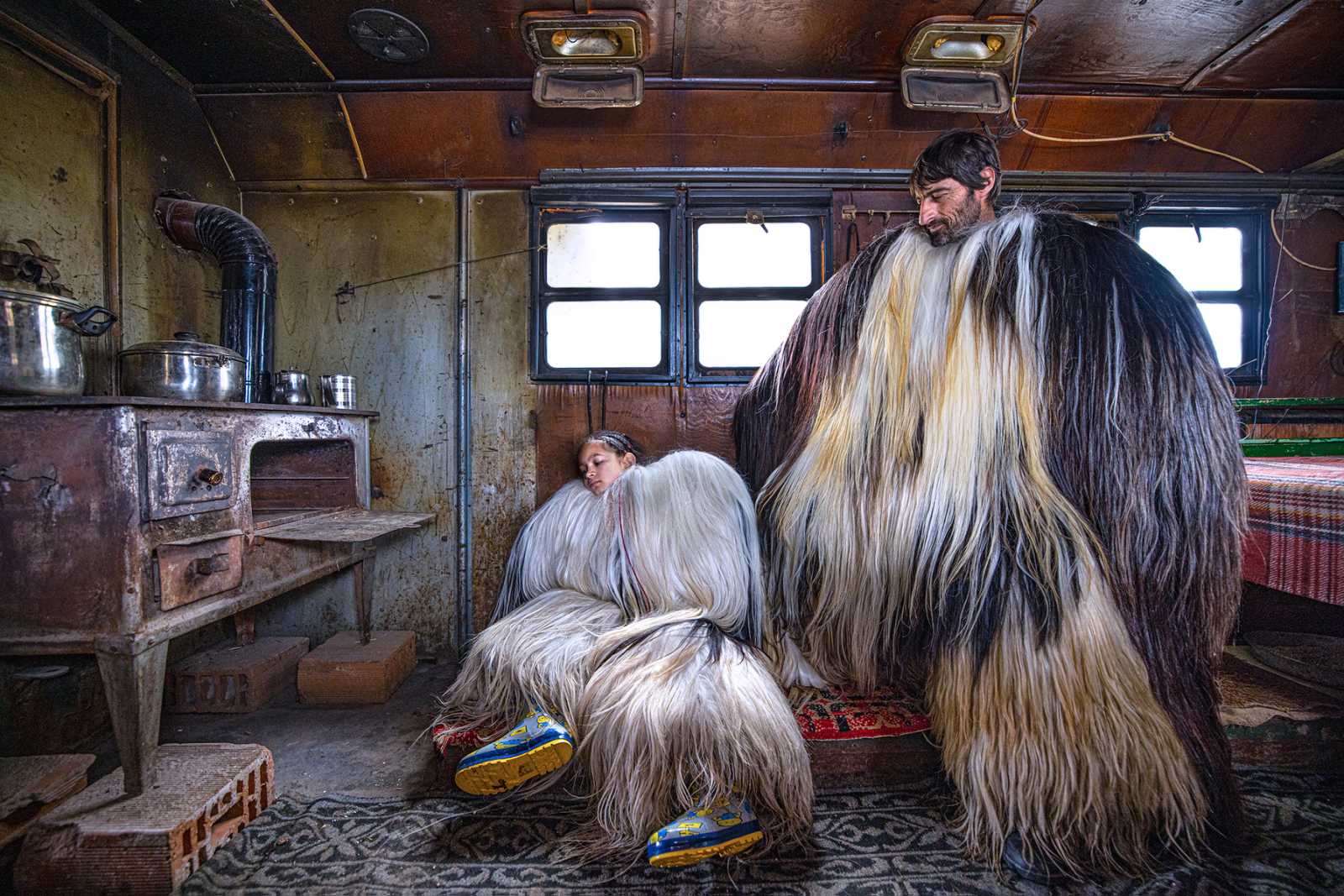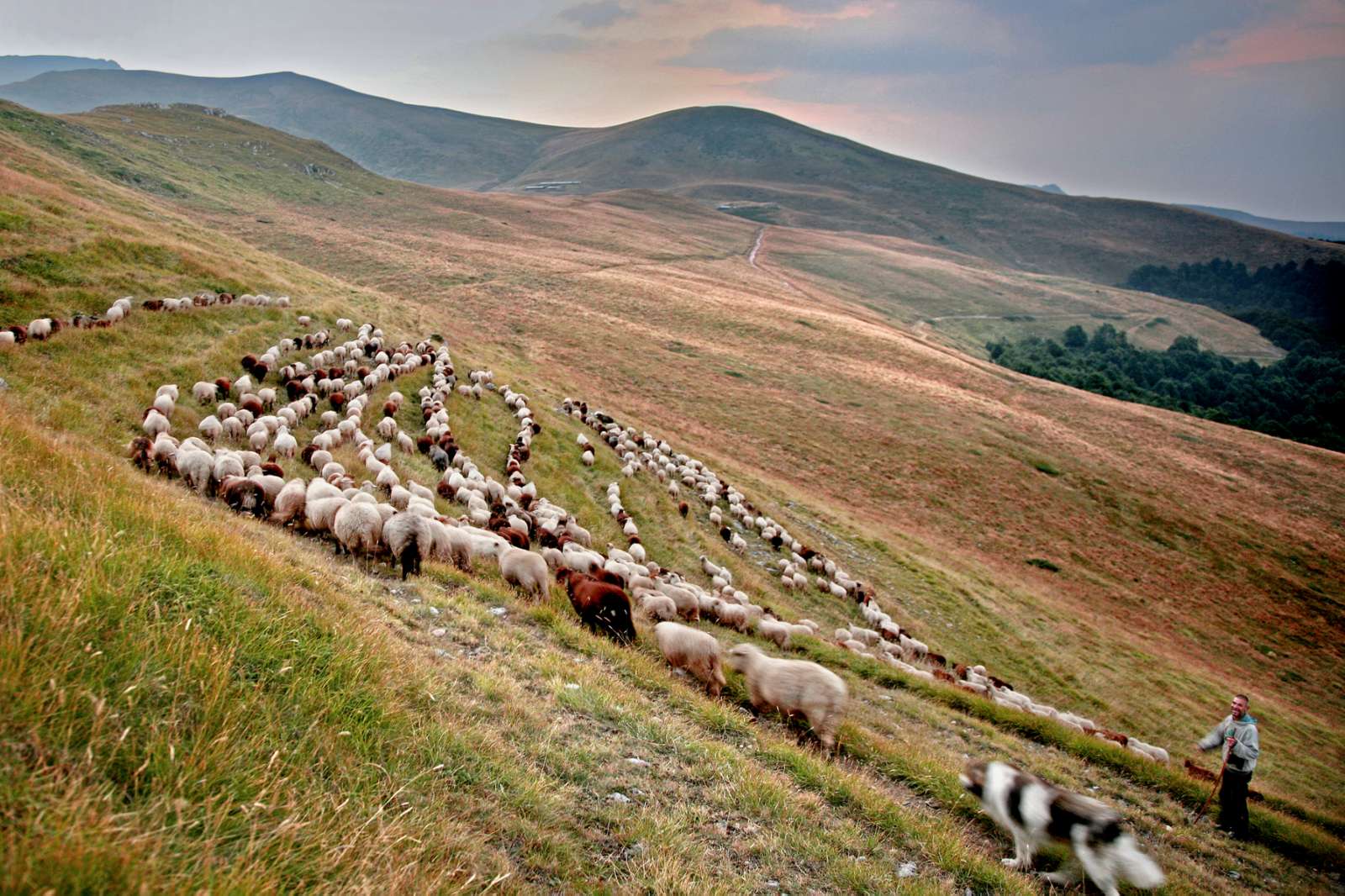
Kukeri - © Ivo Danchev
Between the desire to document and the need to dream - this suspended territory is the realm of Ivo Danchev, one of the most talented Bulgarian photographers, who for some years has dedicated himself body and soul to documenting the tradition of the "kukeri". An interview
How did you get into photography?
About fifteen years ago, when I was leading a vulture conservation project in the Central Balkan region, I bought my first camera. The idea was to document the main activities of the project, but during the mountain excursions I started photographing the wild horses of the area and the life of the local shepherds. Almost for fun, I sent my shots to an important photography competition, and I ended up winning it. It was a turning point, in which I understood that I could develop my two passions together: nature and art, united in photography.
From there, things developed quickly: over the next two years I worked to learn, winning more competitions and gaining more confidence in my means of expression. Just then the Bulgarian version of National Geographic started publishing local materials and, after seeing my photos, asked me to manage such reports as artistic director. Thus in 2009 my first reportage for the magazine was born, on the Karakachani minority, which also had great success at an international level, giving rise to a fruitful collaboration that continues to this day.
In 2015 you decided to move from the capital Sofia to a small village on the slopes of the Rhodope Mountains. How did this choice influence your understanding of photography?
Before I moved, I probably had a rather idealised vision of rural life, a vision that most likely emerged from my shots. Today my gaze is probably much more realistic. At the same time, however, the choice to live in a village brought me even closer to the subjects and situations that I love to photograph most.
A certain romanticism is a fundamental trait of your life and your artistic choices. Romance that you have long cultivated towards native Americans. What does this community represent for you?
A part of me lives of dreams. In my youth I long dreamed of learning about the Redskins, reading every book and watching every movie I could get my hands on. At a certain point, however, I felt that it wasn't enough, I wanted to become one myself and in 2004 I decided to go and live with them. Another turning point in my life: after only four days on the Pine Ridge Sioux reservation, in South Dakota, I found myself fleeing into the night because those who had hosted me, after getting drunk and drugged, attempted to rob me and – probably – to kill me. Here too it was painful to abandon the dream and realise the difficult reality of marginalisation and poverty in which Native Americans live today. With this new awareness and a good dose of humility, a month later I entered the Crow reservation in Montana, where I lived an intense and liberating experience. I stopped trying to be one of them, and felt the need to go back to my roots, in Bulgaria.
Since then Bulgaria has been at the centre of your photographic and artistic experience. What inspires you most about your homeland?
The experience in the United States, and perhaps the distance, made me feel a deep connection with my homeland. A bond made of nature, landscapes, people. In recent years I have tried to continue telling stories of men and women who - in Bulgaria - remained close to the land, to finally get to my project on "kukeri", which I launched with my first photos on the subject in winter 2018. The "kukeri" represent a new key moment in my professional life, because in their history all the various interests that I have pursued in the past are intertwined: the life of mountain shepherds, the animals, the legends and the myths that have always enchanted me and in some way even native Americans, as this very ancient tradition is somehow close to that of them and somehow shares their tribal spirit. It is no coincidence that my native American friends are literally fascinated by the "kukeri" and their history. A fascination which, in my case, has turned into a real obsession which has never abandoned me in recent years.
The photographic reportage you created on the “kukeri” for the Bulgarian edition of National Geographic also had enormous success abroad, and was republished by the magazine in 17 other countries - a record. What do you think has struck such a chord with such different audiences?
On the one hand I think it is the uniqueness of this tradition, so unexpected, which manages to impress readers even in a world so inflated with stories from all over the planet. On the other hand, at least I hope, the quality of my shots, with which I tried to tell the relationship between the masks, the earth, the animals and the people who give them life in a way that is both mystical and fairy-tale, which has touched the imagination and emotions of many.
What did you discover, what surprised you during your project?
When I started photographing traditional masks, I knew very little about this tradition and the people who keep it alive today. During the long journey I made to document the "kukeri" throughout Bulgaria, I discovered many elements unknown to me and sometimes surprising. For example, that this tradition experienced a moment of strong rediscovery and evolution during the communist period.
Today's masks began to take their current shape in the 1960s, when the first festivals were organised with competition between the participating groups, who developed increasingly flashy and visionary costumes. Until then, the “kukeri” lived in a much more local and improvised dimension. Over the years, the regional peculiarities of the masks involved have strengthened and deepened, and today Bulgaria can boast an enormous variety, which gives me complex and multicolored photographic and human material.
I was then struck by seeing first-hand how vital this tradition is today in Bulgaria, how strongly it changes and develops over time and I can even identify trends and fashions, such as that of creating costumes using the skins of the Kalofer woolly goat, a local breed that until about twenty years ago was on the verge of disappearing. Today these costumes – truly impressive and very beautiful – have pushed many farmers to reintroduce this variety of goat: also because the prices and value on the market are constantly growing.
In modern Bulgaria, what role does the “kukeri” tradition play?
Bulgarians preserve some of their most ancestral traditions. Perhaps thanks to the isolation and continuity of life in the villages. Not even the Church has managed to eradicate them, but has limited itself to reinterpreting them, and making them partly its own. Today, however, I see new elements grafted onto this thousand-year-old tradition: I feel a need to seek positive sensations and reaffirm one's identity in a society, the Bulgarian one, which continues to be marked by profound social and economic problems. In this sense, the "kukeri" are transforming into a symbol of new national pride, of the uniqueness of our country's traditions, especially for that part of society marginalised by economic and political processes.
Is this also why, as you have had the opportunity to tell through your photographs, the "kukeri" tradition is taking on an increasingly lively and important role in the Bulgarian Roma community?
Roma have been participating in the tradition for a long time, but in the last decade an interesting trend is visible: more and more Roma communities create their own autonomous folk groups. During the celebrations and parades, I noticed the strong presence of tricolors and Bulgarian national symbols. I am convinced that one of the factors at play is the desire of these communities to integrate more into Bulgarian society through the interpersonal networks created by the "kukeri": here Roma and Bulgarians exchange costumes, help each other, create friendships and collaboration on a more equal footing than in other contexts.
Your project on the “kukeri” is a long-term professional and artistic commitment. What results would you like to achieve?
A first concrete result I am aiming for is the creation of a book, through which I would like to represent the tradition throughout Bulgaria. That's why I continue to travel and take photographs. On the other hand, however, I decided to leave the doors open to inspiration and let the project itself dictate the timing and any new stories and new objectives. My journey with the "kukeri" is inevitably intertwined with themes and people that I discover along the way: a whole part of my research, for example, focused on the question of the abandonment of the countryside, reinterpreted through the absence of the inhabitants and the presence of the figures - both protective and disturbing - of the "kukeri".
blog comments powered by










